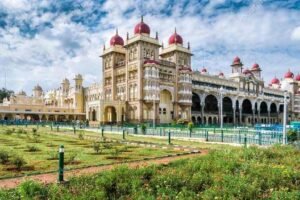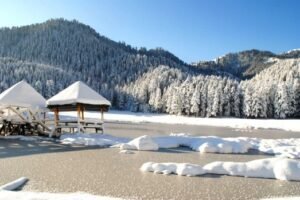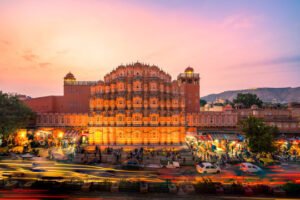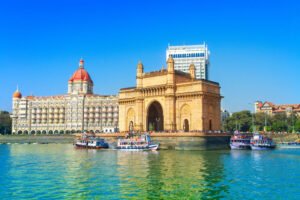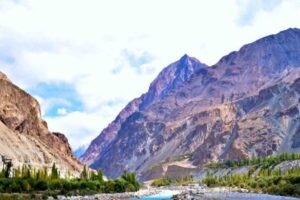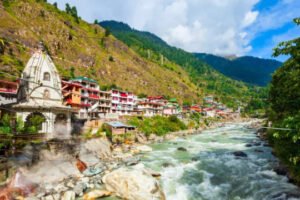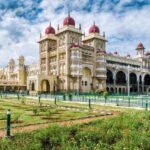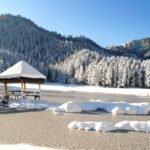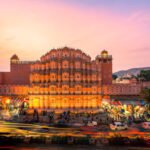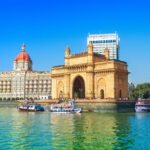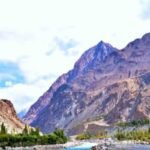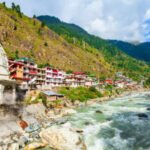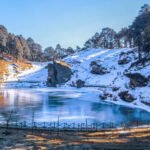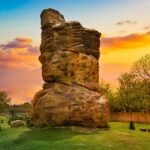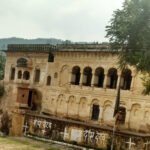Exploring Arki Fort in Solan: A Historical Gem
Arki Fort, a striking structure located in the Solan district of Himachal Pradesh, stands as a testament to the rich historical tapestry of the region. Constructed in the 18th century, the fort was built during the reign of the rulers of the princely state of Arki, highlighting its significance as a strategic military stronghold. The fort not only reflects the architectural prowess of that era but also embodies the cultural and historical narratives of the time.
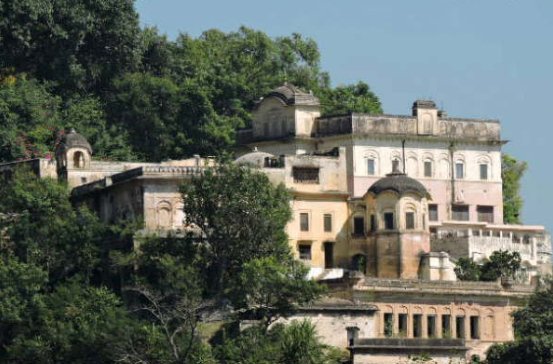
Throughout its history, Arki Fort has witnessed numerous conflicts and changes in power dynamics, serving as a residence for local rulers and a symbol of sovereignty. Its connection to the region’s history is profound, representing the cultural amalgamation of various influences—Mughal, Rajput, and local traditions. As such, the fort has emerged as a significant landmark in Solan, drawing history enthusiasts and tourists alike who seek to explore its storied past.
Historical Significance of Arki Fort
Arki Fort, an architectural marvel located in the Solan district of Himachal Pradesh, is steeped in a rich tapestry of history that dates back to the 17th century. Constructed by Rana Khet Prakash, the fort served as a vital stronghold for the rulers of the region, symbolizing their power and authority during a tumultuous period marked by territorial disputes and conflicts. The strategic location of Arki Fort allowed its occupants to oversee the surrounding valleys, making it an essential defensive structure against invasions.
The Arki Fort boasts a fascinating history, dating back to the 17th century. It was built between 1695 and 1700 by Rana Prithvi Singh, a descendant of Rana Sabha Chand, the founder of the Baghal princely state. The fort served as the capital of Baghal for a significant period, witnessing the rise and fall of dynasties and playing a crucial role in the region’s political landscape.
Today, the fort stands as a monument to the heritage of Solan, drawing visitors who are eager to explore its corridors and learn about the historical events that transpired within its walls. As a testament to its historical significance, Arki Fort not only showcases the architectural prowess of its builders but also serves as a reminder of the region’s complex past and the changing dynamics of power and culture in the Himalayas.
Architectural Features of Arki Fort
The Arki Fort is a testament to the architectural prowess of its builders. It is constructed on a hillside, showcasing a unique terraced design. The fort complex comprises several structures, including the Diwan Khana (Hall of Audience), the Zenana (women’s quarters), and various residential buildings. The Diwan Khana is particularly noteworthy for its exquisite Kangra-style paintings, depicting mythological scenes and showcasing the artistic talents of the era.
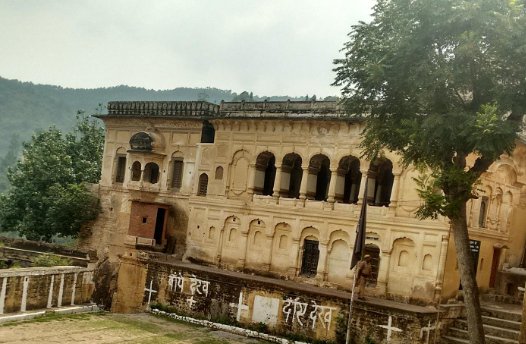
One of the most striking features of Arki Fort is its intricate wood carvings that adorn doors and windows. This craftsmanship reflects the skill and artistry of local artisans, showcasing motifs inspired by nature and religious symbols. The attention to detail is evident in the elaborate designs, each telling a story of its own. These woodworks, often found in the upper sections of the fort, contrast beautifully with the robust sandstone walls, which were constructed for both aesthetic appeal and defensive strength.
The fortified walls of Arki Fort are another element that enhances its architectural significance. These walls, built using locally sourced materials, have a sturdy yet elegant design. They not only reflect the military architecture of the period but also encapsulate the history and heritage of the region. Overall, the architectural features of Arki Fort not only tell of a fortified past but also hint at the cultural richness that continues to draw visitors today.
Interesting Facts about Arki Fort
The Arki Fort boasts several interesting features that make it a captivating destination
- Architectural Blend: The fort showcases a fascinating blend of Rajput and Mughal architectural styles, evident in its design and construction. This fusion reflects the historical interactions and cultural influences of the region.
- Kangra-style Paintings: The Diwan Khana (hall of audience) is adorned with exquisite Kangra-style paintings. These vibrant and intricate artworks depict mythological scenes, royal portraits, and everyday life, offering a glimpse into the artistic traditions of the region.
- Terraced Construction: The fort’s ingenious terraced construction, built on a hillside, is a testament to the architectural skills of its builders. This design not only maximizes space but also provides stunning views of the surrounding landscape.
- Historical Significance: The fort has witnessed significant historical events, including its capture by the Gurkhas in the 19th century. These events have shaped the fort’s history and added to its mystique.
- Heritage Hotel: The fort’s conversion into a heritage hotel allows visitors to experience a unique blend of history and luxury. Staying within the fort’s walls provides a chance to immerse oneself in its rich past while enjoying modern comforts.
How to Reach Arki Fort
Arki Fort, nestled in the scenic hills of Solan, serves as an attractive destination for history enthusiasts and nature lovers alike. Reaching the fort is relatively straightforward, with various transportation modes available to accommodate travelers from different regions. The most convenient way to access Arki Fort is by road, as it is well connected through a network of highways and local roads.
Visitors traveling by car can take the National Highway 5 from Shimla, approximately 60 kilometers away. This route not only offers a smooth drive but also provides picturesque views of the surrounding landscape. There are also regular taxi services available from nearby towns like Solan and Shimla. Buses operated by the Himachal Road Transport Corporation frequently ply on this route, making bus travel another viable option for reaching Arki Fort.
For those opting to travel by train, the nearest railway station is located in Solan, which lies about 27 kilometers from the fort. The station connects with major cities such as Delhi and Chandigarh. From Solan, one can easily hire a taxi or board a local bus to continue the journey to Arki Fort. Alternatively, the Chandigarh railway station, which is approximately 70 kilometers away, serves as another access point for tourists, offering broader connectivity.
Air travel is also an option, with the nearest airport being Chandigarh International Airport. Travelers can catch domestic flights from major cities across India. Upon arriving at the airport, visitors can hire a taxi or use a rental car to reach Arki Fort, enjoying the scenic drive along the way.
Best Time to Visit Arki Fort
When planning a visit to Arki Fort in Solan, it is essential to consider various factors such as climate, local festivals, and peak tourist seasons. The ideal time to explore this historical gem is during the months of March to June and September to November. During these periods, the weather is pleasantly mild, allowing visitors to navigate the fort and its surroundings comfortably.
From March to June, the days are warm and the nights remain cool, making it an excellent time for exploring the beautiful architecture and scenic vistas that Arki Fort has to offer. This period also coincides with various local festivals, which enrich the cultural experience for tourists. Engaging with these festivals provides an opportunity to witness traditional performances and local crafts while enjoying the fort’s ambiance.
September to November presents another ideal window to visit Arki Fort. The monsoon season recedes, leaving the landscape refreshed and vibrant. The post-monsoon months are characterized by clear skies and moderate temperatures, making it easier to appreciate the fort’s stunning views and intricate designs. Additionally, this timeframe often sees fewer tourists, allowing a more serene experience away from the crowds.
What is the history of Arki?
Arki was the capital of the princely Hill state of Baghal, which was founded by Rana Ajai Dev, a Panwar Rajput from Dhar state in Central India. The state was founded in the 11th century and Arki was declared its capital by Rana Sabha Chand in 1643.
What is the history of Lutru Mahadev temple Arki?
Perched atop a lofty mountain, the temple was dedicated to Lord Shiva and was constructed in the year 1621 by the king of the princely state of Baghal. According to legend, Lord Shiva appeared in the king’s dream and asked him to construct a temple on top of the hill.
What is the Arki Hill capital?
Arki was the capital of the princely Hill state of Baghal which was founded by Rana Ajai Dev, a Panwar Rajput from Dhar state in Central India. The state was founded in the 11th century and Arki was declared its capital by Rana Sabha Chand in 1643.
Which is the oldest living fort in India?
The oldest surviving fort in India, Qila Mubarak is located in the centre of Bathinda, Punjab, India. It has been in its current location from 1100–1200 AD.
Which is the oldest fort in Himachal Pradesh?
The Kangra Fort was built by the royal Rajput family of Kangra State (the Katoch dynasty), which traces its origins to the ancient Trigarta Kingdom, mentioned in the Mahabharata epic. It is the largest fort in the Himalayas and probably the oldest dated fort in India.
